Captain Ivan Cahill, Royal
Australian Regiment
the
only foreigner to have direct command of an American Rifle Company in
Vietnam
|
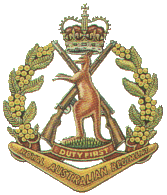
|
<<<
"Skippy" the badge of the Royal Australian Regiment |

|
|
"EGA" or Eagle
Globe Anchor; the badge of the USMC >>> |
 |
<<< Regiment
badge of 3rd Marine Regiment
Battalion Badge of 2nd
Battalion 3rd Marine Regiment
>>> |
 |
The
upturned brim of his distinctive Australian slouch hat
made him
immediately stand out to the young Marines at their base camp south of Da
Nang. And his manner of saluting, flat palm of hand facing forward and brought crisply to his
hat-brim, reverberating slightly as it snapped to a stop in the British manner,
caused whole groups of young Marines to deliberately cross his path so
that they could salute him and then watch the spectacle of his return
salute.
Captain Ivan J. Cahill of the Royal Australian
Regiment held an
entirely unique distinction: He was the only foreigner to have direct
command of an American rifle company in combat. Not an adviser, not an
observer, not a liaison officer, Captain Cahill was the commander of Echo
Company, 2nd Battalion, 3rd Marine Regiment, during some of the most
savage fighting in that unit's proud history.
Even after a long and
distinguished career in the Australian army, including the command of an
Australian infantry company during his second tour of Vietnam in 1971,
retired Colonel Cahill would remain proud of the uniqueness of his
American company command.
|
Unit
History (part).
The 3rd Marine Regiment was reactivated on 16 June 1942, in North
Carolina, as part of the World War II military expansion. The
regiment fought and bled at Bougainville
and Guam. Four medals of Honour were awarded to members of 3d
Marines for actions during this period. Following World War II, the
Regiment was ordered to China to aid in the disarming of Japanese
units and to assist the Nationalist Government in the occupation of
Northern China in an effort to deny land to the communists.
3rd Marines was quick to respond to
the call for forces in Vietnam, providing security for the Da
Nang Air Base in early 1965.
The Regimentís experience level and ability to adapt led to many
innovations including the Combined Action Company and the Civic
Action Program. Ultimately, 3rd Marines was to participate in 48
major operations in the Republic of Vietnam.
|
|
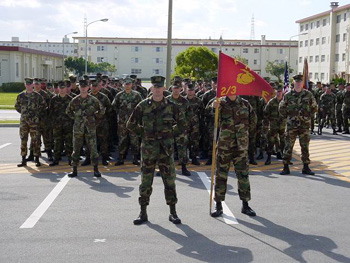 |
Echo
Coy 2nd Bn 3rd
Marine Regiment
USMC
2002
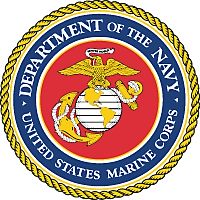
|
The story of how he came to command a U.S. Marine rifle company began in
Melbourne, Australia, where Cahill had been born some 26 years before he
served in Vietnam. After finishing high school, he trained at Australia's
prestigious Royal Military College, Duntroon, where he was commissioned a
Lieutenant in December 1963. Cahill was then posted to an Australian
Infantry Battalion stationed in north-eastern Australia and from there to
the Pacific Islands Regiment in Wewak, New Guinea. At that time New Guinea
was still an Australian protectorate, its forces part of the Australian
army and led by Australian officers.
After a couple of years in New Guinea, Cahill was sent to Okinawa in May
1967, where his duties had him working with American forces, in particular
with the headquarters of the 9th Marine Amphibious Brigade (MAB). At the
time, the 9th MAB had several responsibilities, one of which was the
provision of two of its battalions as the Seventh Fleet's Special Landing
Force (SLF).
The SLF served as the Marines' mobile fire brigade, cruising off the coast
of Vietnam and ready to be deployed to hot spots and battles as needed.
Only a month before Cahill's arrival, in April 1967, the SLF had been
thrown into the hill fights around Khe Sanh and had seized the strategic
Hills 881S, 881N and 861, which would later prove extremely valuable to
the defence of the Khe Sanh airstrip during the Tet offensive of 1968.
Service in the SLF battalions was clearly service in the vanguard of the
Marines' war against the NVA and VC, and Captain Cahill was eager to be a
part of it. While he was initially posted to the island of Okinawa in a
liaison billet as an S-3 (operations) officer, in August 1967 he managed
to join the SLF quietly, without advising Australia, and take up duties on
board USS Tripoli as part of the normal reinforcement chain from the 9th
MAB.
A career soldier, Cahill would later recall, "I was very keen to go
to Vietnam." With the SLF he was dispatched as Liaison Officer to the
forces (U.S. Marine Corps and ARVN) in Vietnam being supported by the SLF.
In that role he participated in several SLF operations, including
-
Operations
-
Belt Drive,
-
Swift,
-
Fortress Sentry,
-
Kingfisher,
-
Formation
Leader and
-
Knox
in the northern provinces of the I Corps area.
(The Yanks pronounce it 'eye core', to Aussies it is "one core")
In the course of Cahill's job on the Marine headquarters staff, he rubbed
shoulders on a daily basis with American Marine Majors and Colonels. One
of those Colonels was Henry Englisch, commander of the 2nd Battalion, 3rd
Marine Regiment (2/3), whose troops were embarked on board USS Tripoli as
SLF-Bravo. Cahill later recalled, "I knew the battalion commander,
Hank Englisch. . .and just kept making it known that I was keen to command
a company within the battalion." He noted: "I didn't say
anything to Australia about this. I didn't even tell Australia that I'd
left Okinawa. Because they could only say 'yes' or 'no,' and I didn't want
to give them the opportunity to say "no"."
In November 1967 the Australian Captain's constant requests for a job with
the battalion finally paid off. Cahill later re-called: "One day Hank
Englisch said to me, 'How would you like to have Echo Company?' And so I
went from the staff of the Landing Force to the Landing Force
battalion." The U.S. Marines of Echo Company now had an Australian
Commanding Officer.
Within a few weeks the 2/3 was reassigned to land-based duty in Vietnam
and another battalion took its turn as the SLF. When Captain Cahill's Echo
Company, 2/3, took up positions south of Da Nang in November 1967, Cahill
simply went along with it. Still he sent no word to Australia that he had
even left Okinawa.
Cahill was enjoying his time with the U.S. Marines. "The Marines were
very keen," he recalled, "very enthusiastic. Terrific young
people. Professionals wanting to do a decent job and trying their utmost
to do so." And the Marines in his charge were equally happy with
their foreign skipper. Echo Company's first sergeant, David Johnston,
noted at the time, in an article that appeared in Stars and Stripes,
"We're fortunate in having Captain Cahill as our Company commander
and we're proud and pleased with the situation."
 |
Soon the Marines of Echo Company even began referring to themselves as
"Diggers," a term Australian soldiers used to describe
themselves.
The "Australian connection" was made even stronger
when Cahill managed to acquire 200 Australian slouch hats for the Marines
of Echo Company-and even received permission from the battalion commander
for the Marines to wear the distinctive hats around the battalion base
camp.
|
|
But the real test would come on December 28, 1967, when Cahill's Echo
Company, 2/3, was placed under the operational control of the 3rd
Battalion, 5th Marine Regiment (3/5), for a combat operation against NVA
forces that threatened the U.S. Marine air base at nearby Da Nang.
Cahill's Echo Company was in the first wave of a helicopter-borne assault.
As they exited the choppers and moved off from the landing zone, Cahill
recalled, "we were brought under fire, and a number of our troops in the forward
platoon were killed." |
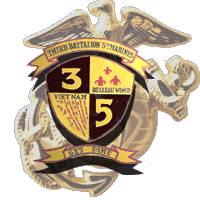 |
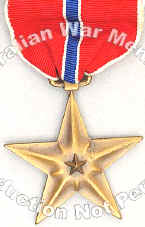 |
A citation for the Bronze Star with combat distinguishing
device, signed
by the Secretary of the U.S. Navy, tells how "Captain Cahill, with
extraordinary coolness and tactical acumen, deployed the Marines under
fire to meet this unexpected threat" and how, for the next several
hours, the Australian Commander skilfully directed air and artillery
support.
It also describes how he "without regard for his own safety,
courageously moved about the battlefield, encouraging the Marines of the
Company in their action against the enemy. |
Cahill's actions that day kept the landing zone open and allowed the
Marines of the 3/5 to enter the battle and complete their assigned
mission, as well as eliminate more than 30 enemy soldiers. Colonel William
Rockey, Commander of the 3/5, summed up his performance, stating that
Cahill "conducted himself heroically, professionally, and efficiently
in command of his company. His leadership was inspirational to the Marines
under his command." But that was not the end of Captain Cahill's time
with the Marines. Far from it. He went on to command Echo Company through
the Tet offensive and several additional operations around Da Nang before
moving north with his battalion to join the 1st Marine Regiment for
Operations Ford, Pegasus and Scotland 11.
For the latter two operations, which took place in and around Khe Sanh,
Lt. Col. Jack Davis, now commanding the 2/3, assigned Cahill as battalion
5-3. But the highlight of his tour, "perhaps one highlight amongst
many," Cahill later recalled, was command of the 2/3's tactical area
of responsibility for a week while the battalion commander and three of
the battalion's rifle companies were away on a task assigned to them by
the regimental commander of the 1st Marines.
|
Thus, during his last week with the battalion, Cahill commanded a force
consisting of two rifle companies (one from his own battalion and one
"on loan" from the 1st Battalion, 9th Marine Regiment), as well
as the direct support artillery battery, a platoon each of tanks, 81 mm
mortars, 4.2-inch mortars, 106mm recoilless rifles and various other
attachments; well over 500 Marines in all. |
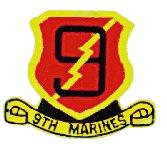 |
During that period he was
responsible for a four-mile stretch of Route 9 near Khe Sanh and an area
of operations encompassing some 40 square miles north and south of the
highway. While Captain Cahill's time with the Marines eventually came to
an end in May 1968, today he still speaks with great pride of what he
terms "the great honour of having led Marines." He also notes,
"whatever views one hears today about Vietnam, no one can deny the
dedication and professionalism of those Marines with whom I was privileged
to serve.
To this day, it is not entirely clear what levels of approval were given
for the unusual arrangements. A foreigner in command of an American unit?
When queried about that many years later, Cahill said: "I think it
was done within 9th MAB and within the Landing Force arrangements. I imagine
that if the [U.S. Marine] battalion commander or the regimental commander
had sought approval from higher up, it might have been denied."
Regardless of the level at which his arrangements had been approved and
authorized, how effective was he in achieving the Marines' objectives? The
Secretary of the U.S. Navy said: "His gallant efforts and brave
initiative in the face of extreme danger were instrumental in the successful
accomplishment of the battalion's mission. Captain Cahill's exceptional
ability, steadfast perseverance, and total dedication to duty reflected
great credit upon himself and were in keeping with the highest traditions
of the Naval Service." And finally, how did I know that whole groups
of young Marines would alter their route just so that they could salute
him and see the peculiar way in which he returned the salute? A quarter of
a century ago, I was one of those young Marines.
Mark W. Woodruff
|